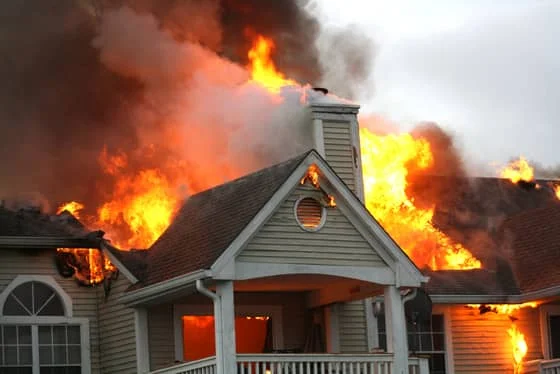In terms of fire safety, most of us concentrate on the basic dangers—a candle left burning, damaged wiring or faulty appliances in the kitchen. However, lurking within our homes are everyday items that may surprise you with their flammability. The risk posed by flammable stuff in your home is often underestimated but can have serious consequences. Many household items that we interact with daily can catch fire under the right conditions. It’s imperative that everyone are aware of such risks and take measures to eliminate them. This guide will inform you about the various items that are easily combustible and how to use them safely, as well as how to avoid fires in your house.
Common Highly Flammable Items
Everyday objects that we do not give a second thought, can in fact be flammable stuff, which may come as a surprise to many. Some of these are:
-
Batteries
Yes, those simple batteries that are kept in remotes and other devices pose a potential risk of fire. During a fire hazard due to heat from chemical reactions occurring within when they are damaged or incorrectly stored, batteries can leak or burst. Additionally, there are likely to be excessive temperatures or even short circuits that could lead to overheating bursts.
-
Aerosol Sprays
Aerosol canisters especially hair spray, deodorants, cleaning agents are containers that much pressurized gases that serve as propellants but are very volatile and flammable. These canisters contain gases under very high pressure and extreme heat levels can cause the contents to explode, making them hazardous to leave scattered around the house.
-
Cleaning Agents
Many cleaning agents contain volatile organic compounds (VOCs) that can ignite easily. Rubbing alcohol, nail polish remover, as well as some disinfectants may also exude flammable fumes which can be dangerous in case of the contact with fire or hot surfaces.
Safe Usage and Storage Tips
Knowing about flammable stuff is only half the battle. Proper usage and storage are key to minimizing risk. Here’s how to handle these items safely:
-
Proper Ventilation
Ensure rooms and areas where these items are used have adequate ventilation. To mitigate the risk of fire from flammable vapors dispersing in the air and accumulating when using aerosols or cleaning agents, keep the windows open or turn on the exhaust fans.
-
Keep Away from Heat Sources
Ensure that combustible materials are kept away from sunlight, heaters and heating appliances. Such measures help limit the chances of these items reaching sources of heat that may initiate fires or even explosions.
-
Cool, Dry Storage
This helps to avoid spoilage and leakage. It is recommended to use metal cupboards for the storage of batteries, aerosol cans, and so forth to avoid any risks of these materials catching fire.
Fire Prevention Strategies
To further safeguard your home, implementing comprehensive fire prevention strategies is crucial. Here are some effective measures:
-
Regular Maintenance
It is advisable to check the sections and the parts of appliances regularly for any damages. Get rid of damaged wires and take care that the devices do not exceed their set limit in order to prevent any sparks or burning from occurring.
-
Smoke Detectors and Fire Extinguishers
Equip your home with smoke detectors and fire extinguishers. Conduct the monthly testing of all smoke alarms and change out the batteries on a regular basis. Learn the appropriate use of fire extinguishers as they are very useful at the onset of a fire.
-
Awareness for Burnt Houses for Sale
If you’re considering buying a house, it’s crucial to assess the history of fire damage in the area, especially when looking at burnt houses for sale. Be sure to thoroughly evaluate the property’s fire safety features and take all necessary precautions before making a purchase decision.
Emergency Response
Despite best efforts, accidents can happen. Knowing how to respond in an emergency can save lives:
-
Evacuation Procedures
Without further ado, formulate detailed exit strategies for your family. Additionally, from time to time conduct fire drills so that everyone understands the fastest and safest alternative routes.
-
Emergency Plan
Come up with a contingency strategy detailing, for instance, addresses and phone numbers of fire services around and where each person should report after leaving the house. This should be readily available to all people living in the house.
-
Prioritize Safety
In the case of a fire, the first priority must be the evacuation of all individuals within the building and no belongings shall be retrieved and no attempts made to re-enter the house after it has been vacated. Seek professional help without hesitation.
Wrapping Up
Understanding and mitigating the risks associated with flammable stuff is essential for maintaining a safe home environment. By identifying common flammable items, employing safe storage practices, and implementing fire prevention strategies, you can significantly reduce the risk of fire-related incidents. Stay vigilant, educate your family, and make fire safety a priority.
For further resources on home safety or if you find yourself interested in fire prevention equipment, consider reaching out to local community workshops or your fire department for guidance. Together, we can foster a safer living space for everyone.

